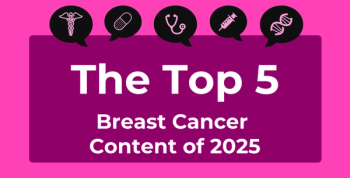
The Promise of Emerging Therapies for IgA Nephropathy and Future KDIGO Guidelines
Panelists discuss how emerging targeted therapies for immunoglobulin A (IgA) nephropathy address critical gaps in the current treatment landscape by offering disease-modifying potential, improved efficacy for resistant cases, and better safety profiles compared with traditional immunosuppression.
Episodes in this series

Emerging Therapies in IgA Nephropathy: Targeting the 4-Hit Cascade
Sibeprenlimab (VISIONARY)
Mechanism: Sibeprenlimab is a monoclonal antibody that targets APRIL (A PRoliferation-Inducing Ligand), a key cytokine in the first hit of the pathogenic cascade.
Relation to 4-Hit Cascade: By inhibiting APRIL signaling, sibeprenlimab reduces the production of galactose-deficient IgA1 (Gd-IgA1) by plasma cells. APRIL plays a critical role in B-cell activation and IgA class switching, particularly in mucosal tissues. Blocking this pathway addresses the root cause of IgAN by diminishing the production of the aberrantly glycosylated IgA1 that initiates the disease process.
Clinical significance: The VISIONARY trial has shown promising results with significant reductions in proteinuria and stabilization of estimated glomerular filtration rate. Its targeted approach may provide efficacy without the broad immunosuppressive effects of conventional therapies.
Povetacicept (RAINIER)
Mechanism: Povetacicept is a dual-target fusion protein that simultaneously blocks both APRIL and BAFF by acting as a decoy receptor.
Relation to 4-Hit Cascade: This therapy addresses multiple aspects of the pathogenic cascade:
- First hit: Inhibits production of Gd-IgA1 by blocking APRIL signaling
- Second hit: Reduces autoantibody formation against Gd-IgA1 by limiting B-cell activation and survival via BAFF inhibition
- Third hit: Consequently decreases immune complex formation by reducing both the aberrant IgA1 and the autoantibodies that target it
Clinical significance: The RAINIER trial demonstrated substantial reductions in Gd-IgA1 levels and significant proteinuria reduction. The dual-targeting approach may provide more comprehensive disease modification by addressing multiple pathogenic mechanisms simultaneously, potentially offering advantages over single-target therapies.
Both therapies represent a paradigm shift in IgAN treatment from broad immunosuppression to precise targeting of disease-specific pathways, potentially offering improved efficacy with reduced systemic adverse effects.
Newsletter
Stay ahead of policy, cost, and value—subscribe to AJMC for expert insights at the intersection of clinical care and health economics.











































